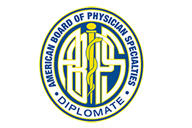Outpatient Joint Replacement
Outpatient joint replacement is a surgery that does not require an overnight hospital stay. Traditionally, joint replacement has been an inpatient surgical procedure. With the introduction of minimally invasive techniques, modern pain protocols, improved anesthetic techniques, and rapid rehabilitation protocols surgeons are able to perform joint replacement procedures on an outpatient basis.
Outpatient Knee Replacement
What is Outpatient Total Knee Replacement?
Outpatient knee replacement surgery, also called “rapid-recovery knee replacement,” “same-day knee replacement” or “ambulatory knee replacement,” is a total knee replacement procedure that allows qualified patients to return home on the same day of the operation, rather than stay overnight on an inpatient basis.
Total knee replacement is the surgical treatment for knee arthritis, where the damaged knee is removed and replaced with an artificial knee implant. Traditionally performed as an inpatient procedure, total knee replacement surgery is now being conducted on an outpatient basis, allowing you to go home on the same day of the surgery.
This is made possible with recent advances such as improved perioperative anesthesia, minimally invasive techniques and initiation of rehabilitation protocols soon after surgery.
How do I know if can have an outpatient knee replacement?
Patients who are in good general health, do not smoke, are motivated and have a good support team at home are the best candidates. Those who qualify are given special education on their recovery, which must be followed closely. We perform a thorough evaluation of each patient’s individual circumstance in order to determine their eligibility for outpatient knee replacement surgery.
If you can answer "yes" to all of the below questions, you may be able to have outpatient knee replacement surgery.
- Are you between the ages of 30 to 70?
- Will you have support at home from a family member or friend after your discharge?
- Are you generally healthy, with no significant medical conditions (for example, sleep apnea, history of heart attack, use of a pacemaker, etc.)?
- All patients who express interest in the ambulatory joint replacement surgery program are evaluated by both the orthopedic surgeon and our Anaesthesiateam in order to determine their eligibility for same-day knee replacement surgery.
What are the benefits of rapid-recovery/Outpatient knee replacement?
The benefits of this surgery include:
- Less pain.
- Lower Infection Risk.
- Better Recovery at Home.
- Quick Return to Normal activity from faster,more aggressive Physical Therapy.
What kind of incision will I have?
The incision will be in front of your knee and is usually five to six inches long.
How much pain will I have after my knee surgery?
This varies between patients, however, the advances in pain management have allowed our total knee patients sufficient pain relief to undergo this procedure on an outpatient basis. On average, the pain being reported is generally four out of a 10-point scale. You will have one of us by your side when you wake up and throughout the day until you leave our facility. We can address any pain that you may have promptly and efficiently.
What should I do when I get home?
We ask that you rest. Even though our patients typically feel good, it has still been a long day. On the day of your surgery you will learn how to safely transfer in and out of both the bed and the car. We ask that you use the bathroom as needed, eat dinner and rest. You will have nursing and therapy services the very next day. Wait for further instruction from them.
What medications do I take at home?
You will be given a list of medications to take and when to take them.
When can I take a shower after outpatient knee replacement?
You can take a shower the day after your surgery. Please wait until the visiting nurse and physical therapist arrives. The nurse will check your dressing and your overall health that morning, and the therapist will educate you on how to safely get in and out of the shower.
Your outer padded dressing and tape can be removed. Underneath you will find a clear tape that is glued to your skin. Do not remove this. You may shower with this and get it wet. Please do not scrub the surgical area. Pat dry with a clean towel when you are finished. We also ask that you do not let your surgical site get “soaked” with water. Do not take a bath or get into a pool or hot tub.
When can I drive after outpatient knee replacement?
You will discuss this with your surgeon. It usually averages two to four weeks from the date of your surgery.
What to Expect after Outpatient Total Knee Replacement?
Several hours after surgery, you will be discharged from the hospital/Surgery Center following a thorough examination to make sure you meet the requirements for discharge such as stable vital signs during exercise, ability to eat and take pain medicine by mouth. You will select to either go Outpatient Physical therapy or Home physical therapy.
Advantages of Minimally Invasive Outpatient Total Knee Replacement
The advantages of the Minimally Invasive outpatient procedure include:
- Minimal surgical dissection
- Shorter recovery period
- Shorter hospital stay
- Reduced postoperative pain
- Less blood loss during surgery
- Increased range of motion after surgery
- Less damage to surrounding tissues
Outpatient Hip Replacement
Hip replacement surgery is one of the most common orthopedic surgeries performed. It involves the replacement of the damaged hip bone (ball shaped upper end of the femur) with a ceramic ball attached to a metal stem that is fixed into the femur and placing a new cup with a special liner in the pelvis. Traditionally, the surgery was performed with a large, open incision and required the patient to stay in the hospital for several days. With advanced techniques, it is now possible to perform these surgeries on an outpatient basis where the patient is up and walking a few hours after surgery and goes home on the same day. Outpatient hip surgeries use the same implants as traditional surgery but involve a smaller incision and newer exposure techniques when compared to the traditional procedures. This type of surgery is less invasive to the tissues and bones and involves a much shorter hospitalization time where the patient can go home the same day.
Benefits of Recovering at Home After Surgery
Recovering at home means leaving the hospital setting and getting to recuperate in the comfort of your home. You will progress better in a familiar home environment where you are more likely to receive good care and a good night’s sleep.
Some of the benefits of recovering at home include:
- Convenience: The convenience of recovering in your home generally makes recovery time easier than an in-hospital stay.
- Lower cost: Since there are no hospital room charges and related hospital charges, costs are much lower.
- Reduced stress: You feel isolated in a hospital setting due to lack of social interaction that negatively affects your recovery. At home, family and friends can visit whenever they like and as often as you wish thereby reducing your stress level.
- Effective recovery: Home recovery is just as effective as in-hospital recovery. In fact, studies have found no significant differences in terms of complications, mobility, or pain in a home recovery.
- Safer: Home recovery is much safer compared to hospital stay as you are at risk of developing hospital-acquired infection (HAI) in a hospital setting no matter how sterile a hospital environment is.
Indication
Outpatient hip surgeries are mainly targeted at treating the joints damaged by arthritis and injuries. Chronic joint pain due to erosion of cartilage, damage due to accidents and autoimmune diseases, or bone death leading to the destruction of cartilage are also treated with the help of this surgery.
Procedure
Outpatient hip surgery is designed to allow surgeons to replace the damaged hip bones through a small, minimally invasive approach. The single incision measures around 5 inches compared to 10 to 12 inches for traditional surgery and is usually placed on the outside of the thigh. The approach goes between the muscles and tendons to expose the hip socket and femoral head, similar to traditional surgery, but to a lesser extent. The head of the damaged femur is removed and the hip socket is cleaned. The stem and ball prosthetics are then fitted into the end of the femur and the cup is placed in the acetabulum without cement to achieve a biologic fixation. The hip is then rejoined and the surrounding tissues are brought back to the normal position. As the incision is very small, fewer muscles and tendons are traumatized.
Postoperative Care and Instructions
After surgery, you will be transferred to the recovery area where you will rest until you are discharged. You will be given pain medications to ease pain. You may have to wear stockings to prevent blood pooling in your legs. You will be able to do light activities within a couple of weeks. You will also be given postoperative instructions, such as:
- Use of assistive devices for walking, such as cane or crutches
- Limited weight-bearing activities
- Suture and dressing care
- Physical therapy and exercise regimen to improve range of motion and strength muscles
- Dietary changes and supplements to improve bone health
- Adherence to prescribed medications
- Adherence to follow-up appointments to monitor your progress
Advantages of Outpatient Hip Replacement
The benefits of outpatient hip surgery are:
- Smaller incisions
- Less scarring
- Less blood loss
- Shorter hospitalization
- Early return to work
- Shorter rehabilitation
- Less tissue trauma
Complications of Outpatient Hip Replacement
Complications are very rare and minimized with an experienced surgeon. Complications in outpatient hip surgeries mostly arise due to difficulty in performing the surgery within the restricted visual field. Some of the complications include tearing of skin and soft tissues, superficial nerve injury, and bone fracture during implant insertions.








